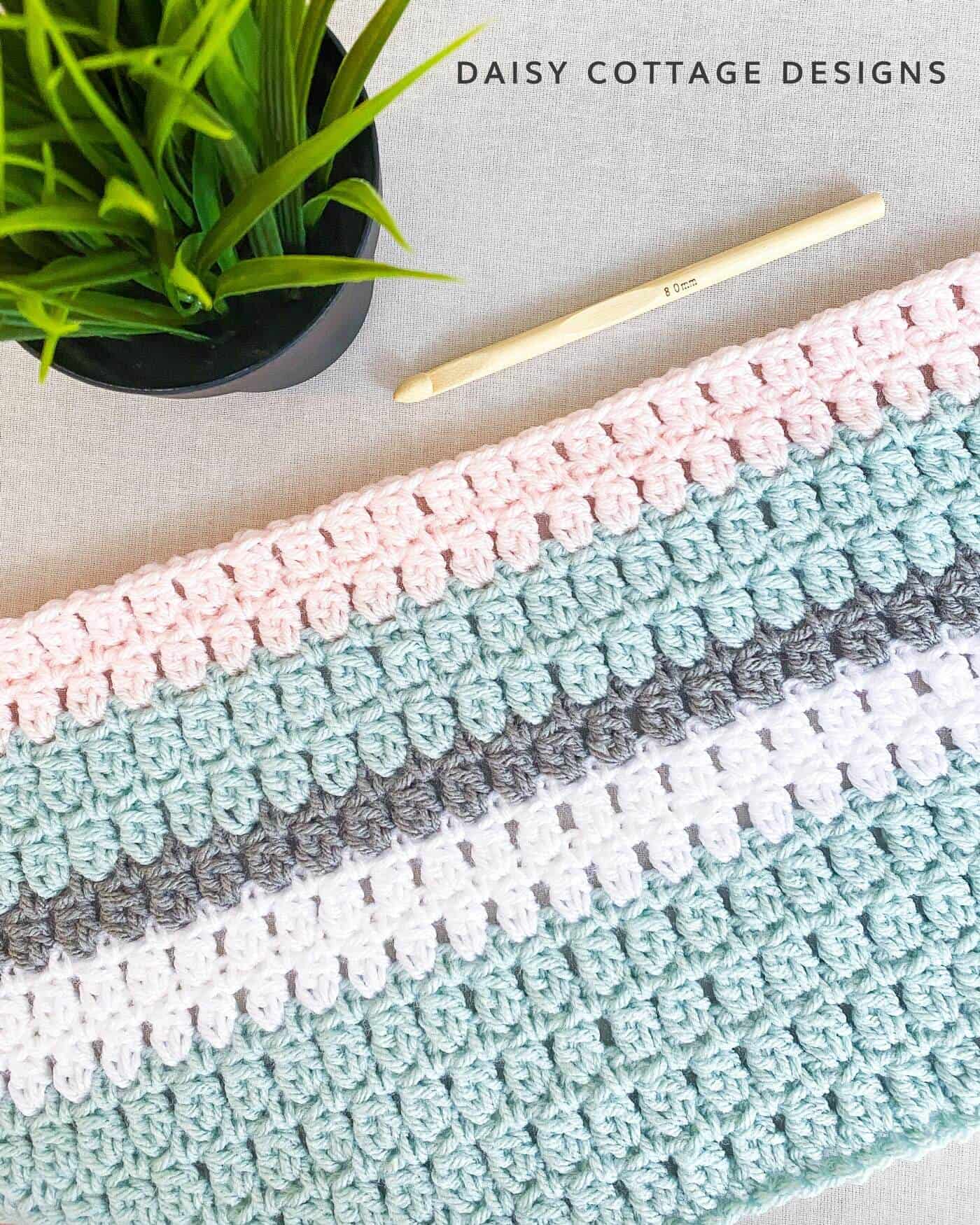Double Crochet Cluster Stitch Tutorial

The stitch you see in this post is called a double crochet cluster stitch. I posted the photos in this post on Instagram over the weekend. Since then, I’ve received a lot of questions asking for details on the stitch. I’m sitting in our van as I write this because our family is headed out of town for a 10 day road trip. Since we’ll be out of town for so long, I decided to go ahead and share the written instructions for this stitch before I finish the blanket and get the full pattern and tutorial finished.
If you’re not ready to work this stitch now,
Double Crochet Cluster Stitch Tutorial
This pattern will work with a variety of yarn weights and hooks. I recommend using worsted weight yarn and a J crochet hook to start.
Yarn Information:
In these photos, I’m using Hobby Lobby’s I Love This Yarn in the following shades:
- Glacier
- Soft Pink
- Graybeard
- White
Special Stitch:
- dc2tog in ch 1 space: yarn over, insert yarn into chain 1 space, pull up a loop. Pull through two loops. Yarn over, insert hook into same ch 1 space, pull up a loop. Pull through two loops. Pull through 3 loops.
Instructions:
Chain any even number. For a baby blanket, I recommend about 100.
Row 1: single crochet in the second chain from the hook. *ch 1, skip a chain, sc in the next stitch* across to the end of the row. Ch 1, turn.
Row 2: dc in the first stitch (don’t skip any stitches here). work a dc2tog in the first ch 1 space, *ch 1, dc2tog in the next ch 1 space* across. dc in the last stitch of the row. ch 1, turn.
Row 3: single crochet in the first stitch. work a sc in the first ch 1 space. *ch 1, sc in the next ch 1 space* across. sc in the last stitch.

Now you’ll simply repeat the second two rows until your project is as long as you want.
Have fun with this stitch. A blanket pattern will be coming soon, as well as a video tutorial for those of you who prefer to learn new stitches that way.
Until then, this video will get you stared on working a dc2tog in a chain 1 space. It’s the same concept as when you’re working into the same stitch like in the video below.
The pattern in the video below is available here.

